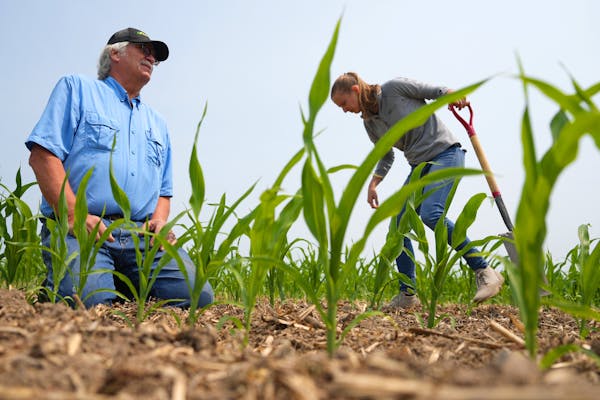Food companies can completely switch to renewable energy at their factories, but their total greenhouse gas emissions won't change much without help from the farmers that supply them.
With emissions from farm operations and supply chains accounting for more than 80% of climate impacts from companies like General Mills or Hormel Foods, businesses are increasingly looking for carbon-capture programs.
Minnesota-based Truterra launched its carbon-capture program three years ago as an agricultural solution for customers trying to meet ambitious climate pledges by 2030 and has seen interest grow from food makers.
"We bridge the gap between what the downstream company wants and the farmers we're working with," said Truterra president Jamie Leifker.
Truterra, a division of Arden Hills-based Land O'Lakes, has now paid $21 million to farmers for keeping more than a million metric tons of carbon in the ground. While that's a small step toward reducing or offsetting U.S. agriculture's 670 million tons of annual greenhouse gas emissions, the company says its progress shows widespread change is possible — and can be profitable for farmers.
"Last year, we doubled the number of growers participating. We're absolutely exceeding our expectations," Leifker said. "We're now putting more emphasis on our downstream efforts to work with food companies."
Those customers include Campbell's, Bel Brands and Purina pet food, who pay for data and carbon credits that in turn pay farmers for conservation practices — helping to take the risk out of changes to their growing practices.
"Like most sustainability programs, this started with a conversation about risk," said Laura Kowalski, head of sustainability at ingredient company Primient. "For us, it's about creating a resilient corn supply chain. Corn is our main raw material, so it's really important that there's a lot of it available for years to come to keep our business going."
Primient started working with Land O'Lakes on sustainability issues in 2018 as the Illinois-based company and more of its customers were looking to reduce greenhouse gases from production.
"It started out with just data collection, and that has evolved into funding interventions," Kowalski said. "We're cost-sharing with the grower to make that practice change."
Truterra offers up to $30 per ton of carbon sequestered and a minimum of $2 per acre for farmers who implement a variety of conservation and regenerative practices on their land. That adds up quickly, with average payouts of $20,000 per farmer in the program's first year.
Zumbrota farmer Jason Lohmann has 340 acres enrolled in the Truterra program, which he joined two years ago. In exchange for up-front payments, Lohmann and other participating farmers across 1.8 million acres share data to help prove sustainability claims.
That's the one area that gives some farmers pause when approached about the carbon program, Leifker said, but the data still belongs to the farmer. It is licensed and shared to give food companies the proof they need to report on climate progress and tout sustainability in their brands.
"What we have successfully done is help farmers navigate the risk by getting trusted advisers engaged because agronomy is local, not regional or national," Leifker said.
By 2026, Truterra wants to be paying for a million tons of stored carbon a year before the race to 2030 really picks up and companies begin sprinting to meet their climate pledges.
"The market is changing really fast," Leifker said. "The value of carbon is going up."
New York City turns to AI-powered scanners in push to keep guns out of the subway system
North Carolina regulators says nonprofit run by lieutenant governor's wife owes the state $132K






